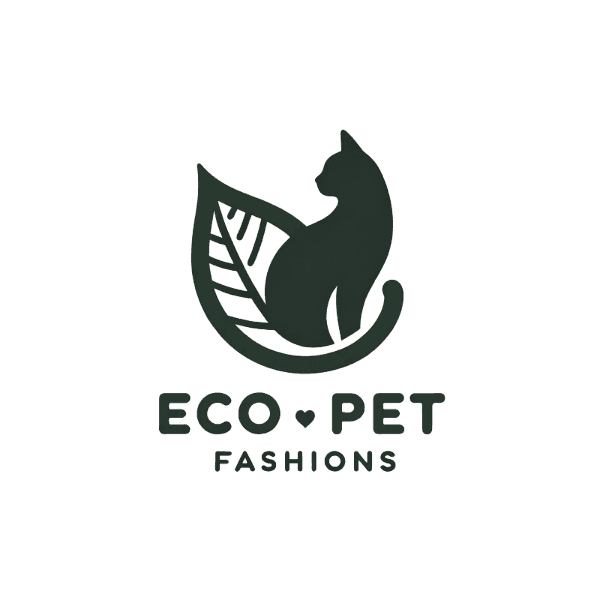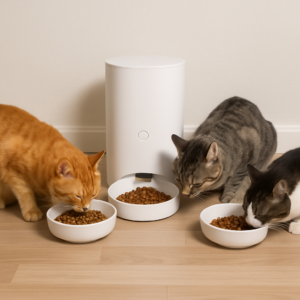The pet food industry is booming, driven by growing pet ownership and increasing awareness of pet health and nutrition. Entering this lucrative market offers great potential, but it’s not without its challenges. The path to establishing a successful pet food manufacturing business requires careful planning, regulatory compliance, and a deep understanding of market trends and customer needs. Whether you’re targeting premium, organic, or affordable pet food products, here’s a comprehensive guide on how to start your pet food manufacturing business from the ground up.
Identifying the Problem and Opportunity
Pet owners today are increasingly concerned about the health and well-being of their animals. Many struggle to find high-quality, nutritious, and safe pet food that meets their pet’s specific dietary needs. Consumers are also gravitating towards natural, organic, and specialty pet foods, leading to a shift in market demand. For aspiring entrepreneurs, this is an exciting opportunity—but only if you can address these demands effectively.
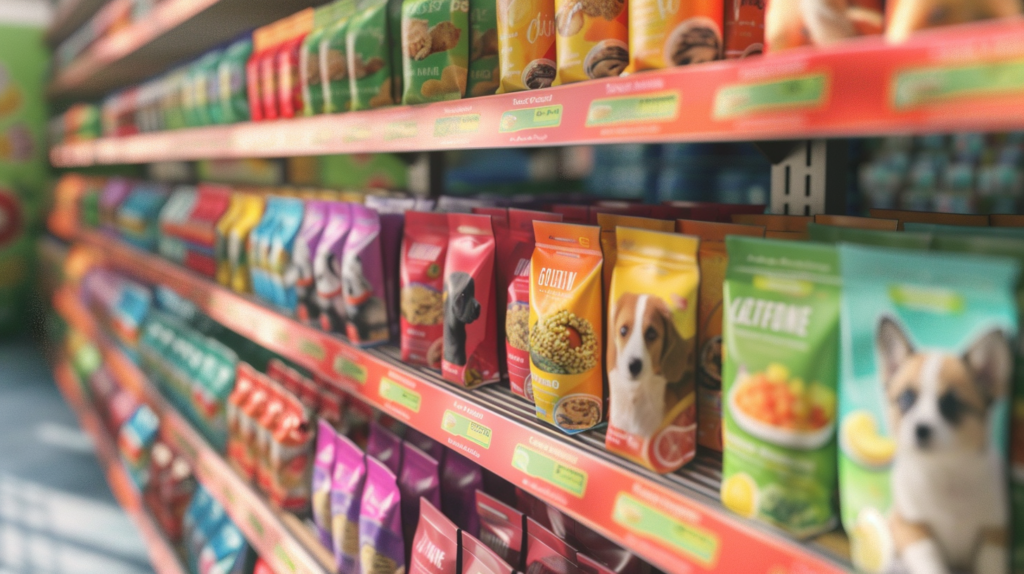
Starting a pet food business allows you to fill a gap in the market, providing products that are tailored to pets’ dietary requirements, made from safe and premium ingredients, and often aligned with sustainability values. However, it’s essential to ensure your business is set up to address regulatory concerns, consumer expectations, and operational challenges.
Step-by-Step Guide to Starting a Pet Food Manufacturing Business
1. Crafting a Solid Business Plan
The foundation of any successful business is a well-thought-out business plan. This document will serve as your roadmap, guiding you through the initial stages and helping you navigate challenges along the way.

Market Research:
Begin with an in-depth analysis of the pet food market. Who are your competitors? What are the trends? Are consumers seeking organic pet food, grain-free options, or specialized diets for pets with health issues? Understanding the landscape will help you identify where your brand can stand out. Also, analyze consumer behavior to determine your target audience—whether it’s pet owners who prioritize premium ingredients or those seeking affordable yet nutritious options.
Defining Your Business Model:
Decide on the nature of your business. Will you produce your own brand, create private label products for existing brands, or focus on niche segments like organic or grain-free pet food? Each model has its pros and cons, with private labeling typically requiring lower marketing costs but yielding lower brand recognition.
Product Line:
Determine the types of pet food you will offer. Are you focusing on dry kibble, wet food, or a combination? Will you include specialty diets, such as vegan or raw pet food? Diversifying your offerings can attract a broader range of customers.
2. Legal Structure and Registration

Establishing the right legal structure for your business is critical for protecting your personal assets and ensuring smooth operations.
Choosing a Business Structure:
You’ll need to select a legal entity for your business. Common options include sole proprietorship, Limited Liability Company (LLC), or corporation. An LLC is often recommended for small businesses, offering personal asset protection while keeping operational flexibility. Consult with a legal advisor to choose the best structure for your business.
Tax Registration:
Once you’ve decided on a business structure, register for federal and state taxes. You’ll need an Employer Identification Number (EIN), which you can obtain from the IRS. Be sure to familiarize yourself with local tax regulations as well.
3. Acquiring Permits and Licenses
The pet food industry is heavily regulated, especially when it comes to safety and quality standards. Complying with regulations not only ensures product safety but also helps avoid legal pitfalls.
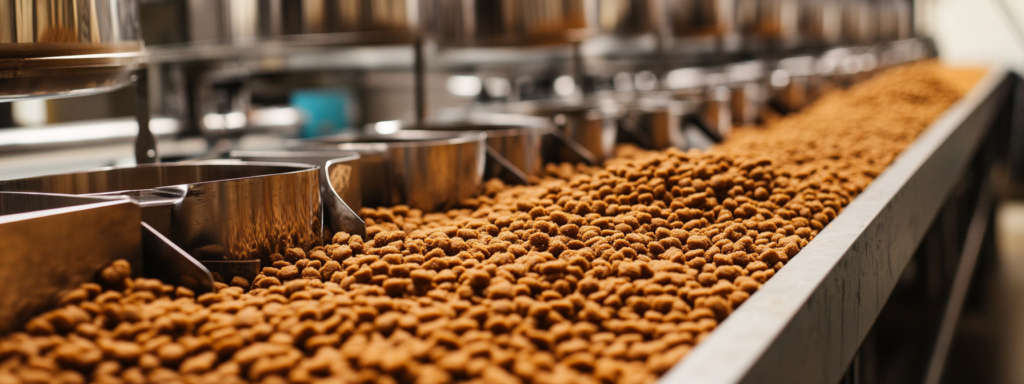
Health and Safety Regulations:
You’ll need to adhere to specific guidelines from agencies such as the Association of American Feed Control Officials (AAFCO) and the U.S. Food and Drug Administration (FDA). These organizations ensure that pet food is safe, nutritionally adequate, and properly labeled. Additionally, state health departments may have their own requirements for food production facilities.
Manufacturing Licenses:
Depending on your location, you might need permits or licenses to operate a pet food manufacturing business. Check with your local authorities to ensure that you’re compliant with all the necessary legal frameworks.
4. Setting Up Your Manufacturing Facility
The production process requires an investment in machinery, equipment, and facilities. Your production scale and product range will heavily influence your setup.
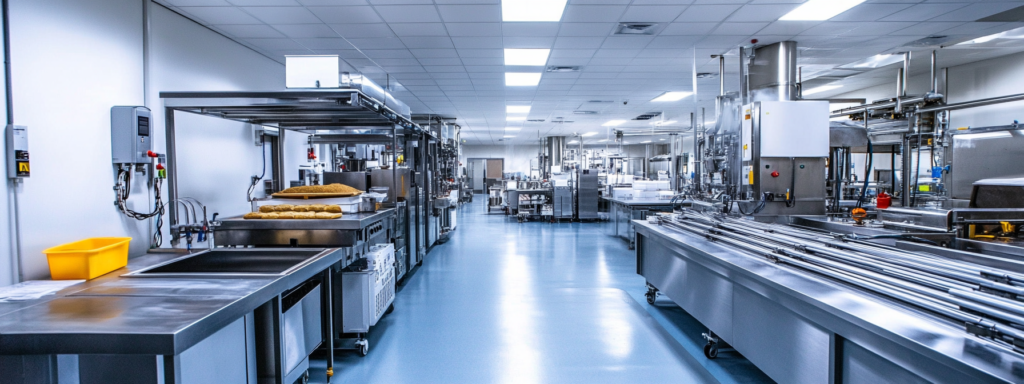
Location:
Choose a suitable location for your manufacturing facility. Factors to consider include proximity to suppliers, access to distribution networks, and compliance with local zoning laws. Your facility should also have adequate space for production, storage, and future expansio
Equipment:
Invest in high-quality machinery tailored to your production needs. This could include mixers, extruders, ovens or dryers, and packaging machines. Your choice of equipment will depend on the type of pet food you’re manufacturing—whether it’s dry kibble, canned wet food, or a specialty product like freeze-dried treats.
5. Ingredient Sourcing and Recipe Development

Supplier Relationships:
Develop strong relationships with reliable ingredient suppliers. Look for high-quality, sustainable sources that meet industry safety and nutritional standards. Whether sourcing proteins like chicken or beef, grains, or specialty additives like vitamins and minerals, transparency with suppliers is key to ensuring consistency and quality in your product.
Recipe Formulation:
Creating nutritious, balanced recipes is vital. This often involves working with a pet nutritionist or veterinarian to ensure your products meet AAFCO’s nutritional guidelines. Consider developing specialized formulas to cater to different pet needs, such as age-specific diets or food for pets with allergies.
6. Implementing Quality Control Procedures
Pet food safety is non-negotiable. Your manufacturing process must prioritize safety and consistency at every stage, from raw materials to packaging.
Quality Assurance:
Implement a rigorous quality control system. This includes testing for contaminants and ensuring that your manufacturing process meets both federal and state standards. Regularly evaluate the quality of your products to maintain high standards and ensure the safety of the pets consuming them.
7. Building Your Brand and Marketing Strategy
Brand Identity:
Your brand identity is critical to standing out in the competitive pet food market. Develop a strong brand name, logo, and packaging design that resonates with your target audience. Whether positioning your brand as a premium, organic choice or a budget-friendly alternative, ensure your branding aligns with your customers’ values and preferences.
Marketing Channels:
Develop a comprehensive marketing plan that includes both online and offline strategies. Utilize social media platforms, such as Instagram and Facebook, to reach pet owners directly. You can also partner with pet stores, veterinarians, or influencers in the pet care industry to increase brand visibility.
8. Distribution and Sales Channels
Your distribution strategy will determine how you get your products into the hands of customers.

Distribution Partnerships:
Decide whether to sell directly to consumers, through retailers, or via wholesalers. Establish relationships with pet stores, grocery chains, and online retailers. You may also consider selling at farmers’ markets or pet-related events to increase exposure.
Logistics:
Set up a reliable supply chain and logistics system for shipping your products. This includes packaging, warehousing, and handling returns. Choose eco-friendly packaging options to align with the growing demand for sustainable products.
9. Financial Management and Scaling Your Business
Running a pet food business requires sound financial planning.

Budgeting and Forecasting:
Outline your startup costs and projected revenue. Initial investments include equipment, ingredients, labor, and marketing. Keep track of all expenses and adjust your business plan as needed to stay on course.
Accounting Systems:
Set up a robust accounting system to track expenses, profits, and taxes. Hiring a professional accountant may be beneficial to ensure compliance and optimize financial performance.
Conclusion
Starting a pet food manufacturing business involves navigating regulatory landscapes, maintaining high production standards, and effectively marketing your brand. With the right planning, a commitment to quality, and a deep understanding of the pet food market, you can successfully tap into this growing industry. The key is to stay adaptable—keep an eye on emerging trends, customer feedback, and innovations in pet nutrition to keep your business thriving in an ever-evolving market.

